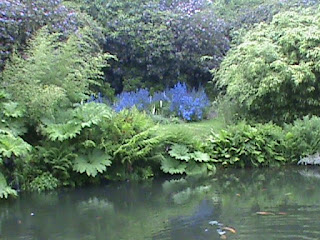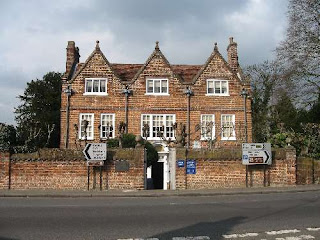 |
| Ybor City postcard |
We often hear the United States of America being described as a “melting pot”, where different races merge into a salad of immense variety to form a medley of blended cultures and communities working together in harmony for the common good. It is this ideal that continues to draw people to the USA from all over the world – hopeful that they too may somehow share in the success uniquely produced in this “land of opportunity”.
 |
| Don Vincente Ybor |
He began his career as a grocery clerk and by 1856 had started his own cigar manufacturing company with the creation of his Prince of Wales brand. He would later flee from Cuba in 1868 with his family to avoid being imprisoned by the Spanish rulers for being a Cuban independence sympathizer.
 |
| Prince of Wales Cigar box top |
 |
| (Left) Ybor cigar factory (Right) Don Vincente Ybor |
Ybor City became known as the “Cigar Capital of the World” producing half a billion a year. The wide variety of cultures worked to help each other, constructing social centers for each ethnicity which sprang up all over town.
 |
| Old cigar factory - photo by Joe Giamotti |
Ybor built affordable housing for the workers, brought in doctors and medical facilities, built schools and roads. He built a variety of community facilities and services established to support the multi-ethnic community.
Click on player below to see a video about the Columbia Restaurant and it's Cuban sandwich.
In the late 1800’s, with such a wide variety of culinary tastes from the diverse immigrant population, restaurants and sandwich shops sprang up all over Ybor City. One of the most notable culinary creations was the invention of the “Cuban Sandwich”.
For an authentic experience, it must be made on bread from the La Segunda Central Bakery, established in 1915 and one of Ybor’s surviving historical landmarks.
Click on player below to see video about La Segunda Central Bakery.
The Columbia restaurant uses bread supplied from La Segunda. The founder of the bakery was Juan More, a native of the Catalan region in Spain. His love of Cuban bread combined with ham, roast pork, cheese and mustard created the now world famous sandwich. Later, due to the Italian influence, salami was added to the mix. The Cuban recently became Tampa’s official sandwich.
 |
| Columbia Restaurant |
Bob and I went to meet a friend, Rudy Triana, for lunch at the fabulous Columbia restaurant founded in 1905 by Cuban immigrant Casimiro Hernandez, Sr. It is the largest and oldest Spanish restaurant in the USA. His family still owns and runs the restaurant which has expanded well beyond the original corner shop and takes up an entire city block. The Columbia restaurant group now has restaurants in several locations throughout the USA. What began as a small cafe serving coffee and Cuban sandwiches to the cigar factory workers, has become a world famous eatery.
 |
| Large dining room in the Columbia restaurant |
Columbia’s unique Spanish cuisine is why the place was packed. There are 15 separate dining rooms, ranging in size and shape from small intimate spaces to large spacious rooms including diners seated at tables on the balcony’s overhead.
 |
| Bob and Kristine |
Sadly, the heritage of Ybor City is about to be lost forever. The manufacture of cigars is in itself a “melting pot” of tobaccos - specifically blended to create a recipe for a unique and flavorful experience found in each individual brand.
The tobacco for premium cigars is actually allowed to “sleep in bales for seven years.” The entire process is practically an art form and takes a considerable amount of time for a talented cigar manufacturer to produce a premium cigar that has a robust taste, the right length and the correct rate of “burn”. Even the way the cigar creates ashes is important to aficionados. All of those elements combined are what determines the quality of the cigar and pleasure of the overall experience.
All those wonderful ancient earthy scents and subtle flavors exhaled from the mountains of tobacco bales and fragrant cigar smoke that once wafted through the air in Ybor City are now long gone.
 |
| Stanford Newman |
 |
| J. C. Newman Cigar Company headquarters |
 |
| Rep. Kathy Castor |
Although I have never smoked a cigar, I respect the rights of those who find pleasure in doing so. How sad the love and care that goes into the creation of this naturally produced heritage product by the last remaining Florida manufacturers, the Newman brothers, will soon be lost to the Caribbean. After all that Mr. Ybor did to raise the quality of cigar production and the livelihood he created for tens of thousands of immigrants, the heritage of this National Historic Landmark City is about to be lost forever.
On a lighter note, while we were in the Columbia restaurant a charming couple came in dressed in costume of dancers from the thirties. I couldn't resist speaking to them and asking to take their pictures and make a video. They are Sandy and Daryl known as "The Joy of Dancing". They perform dances from the big band era in assisted living facilities. What lovely people they are!
Click on the video below for my interview with Sandy and Daryl.
This piece, written by Pat, was originally posted on our website December 16, 2015.


































